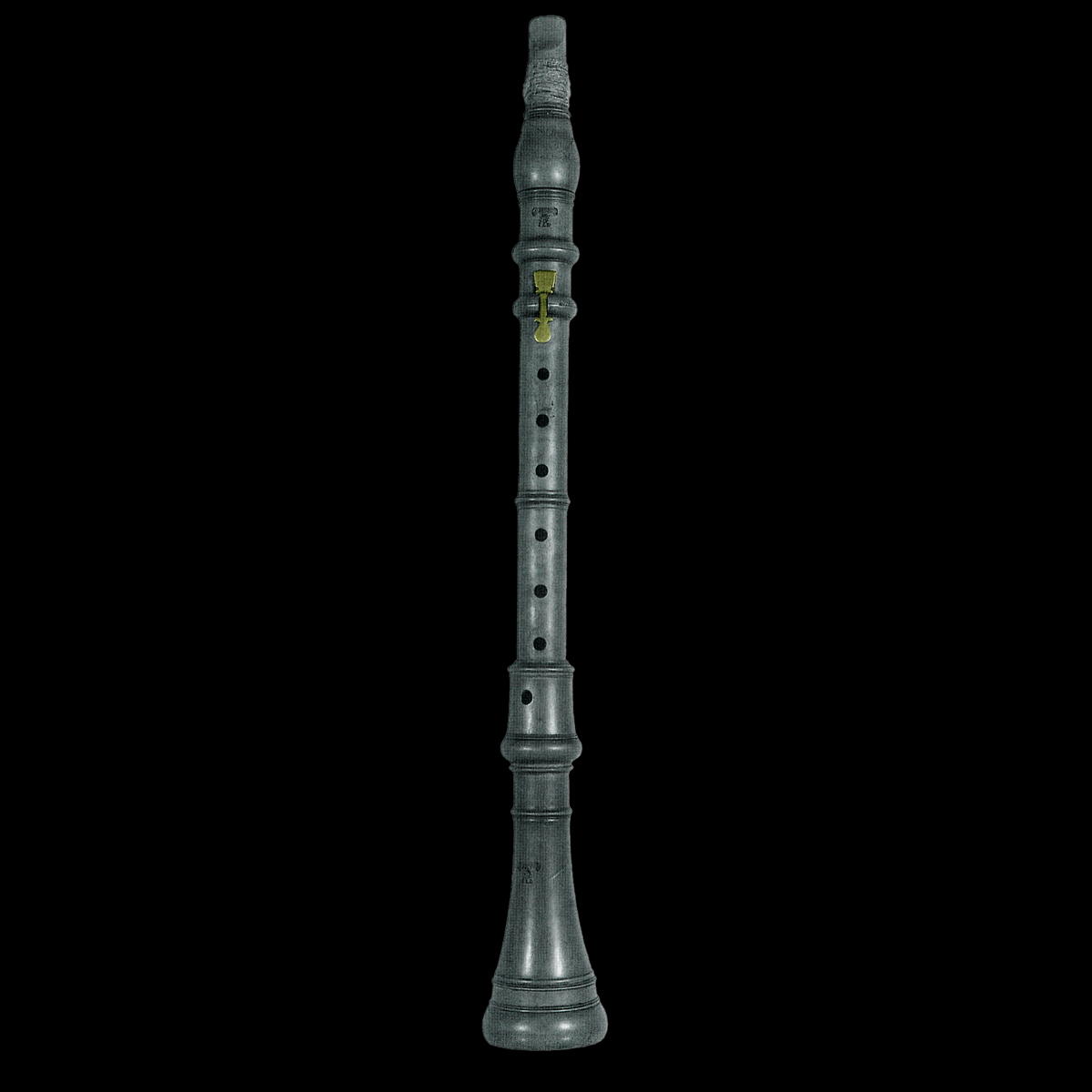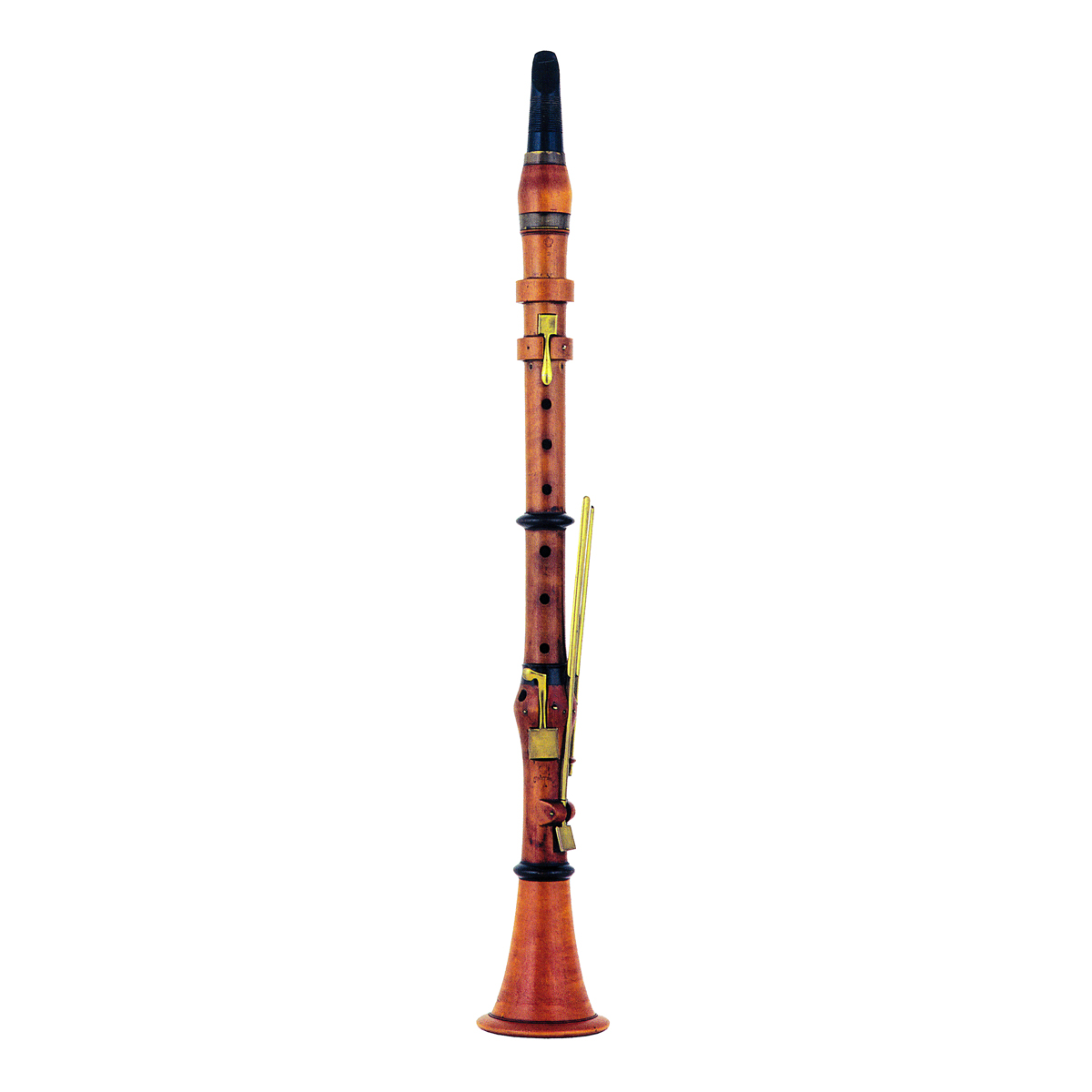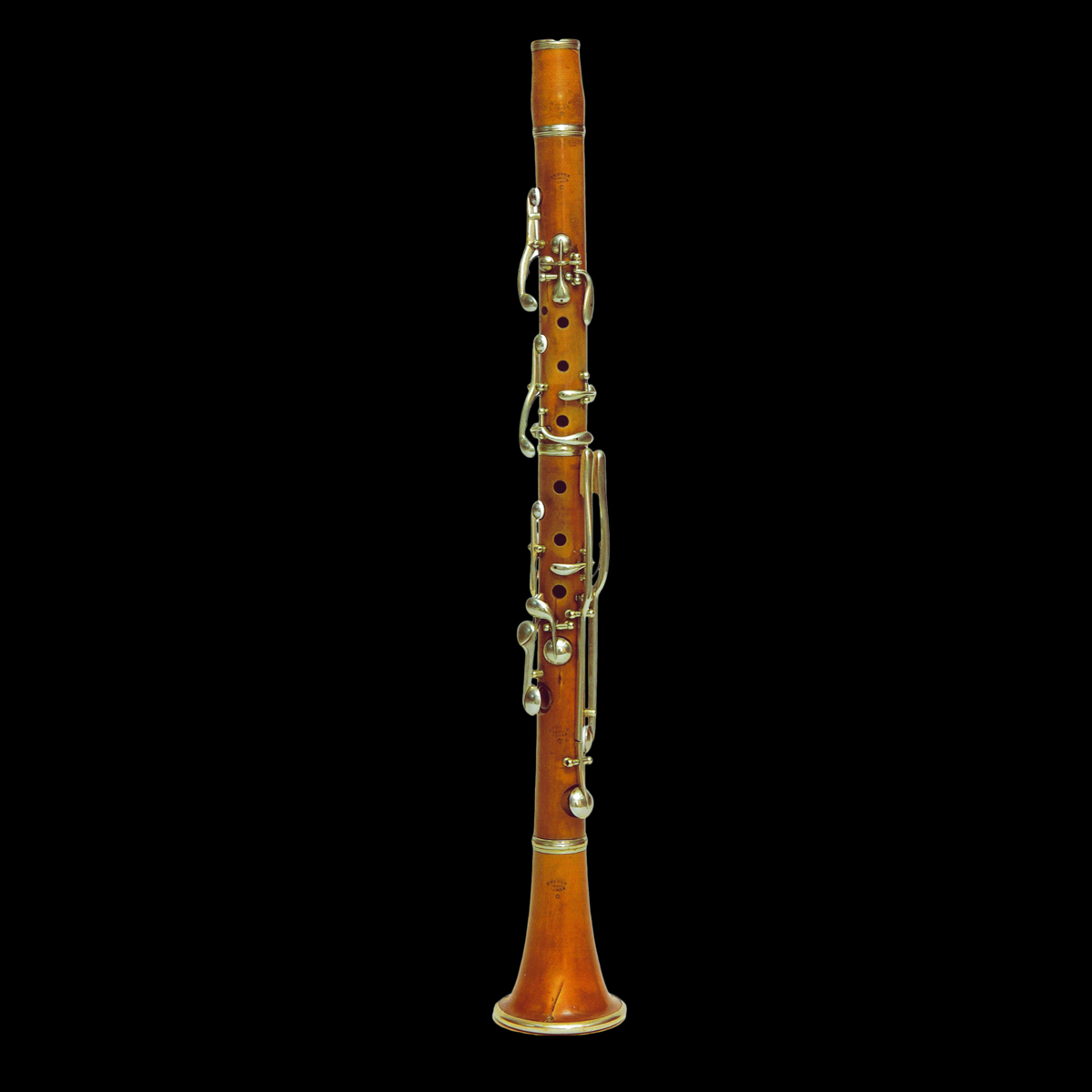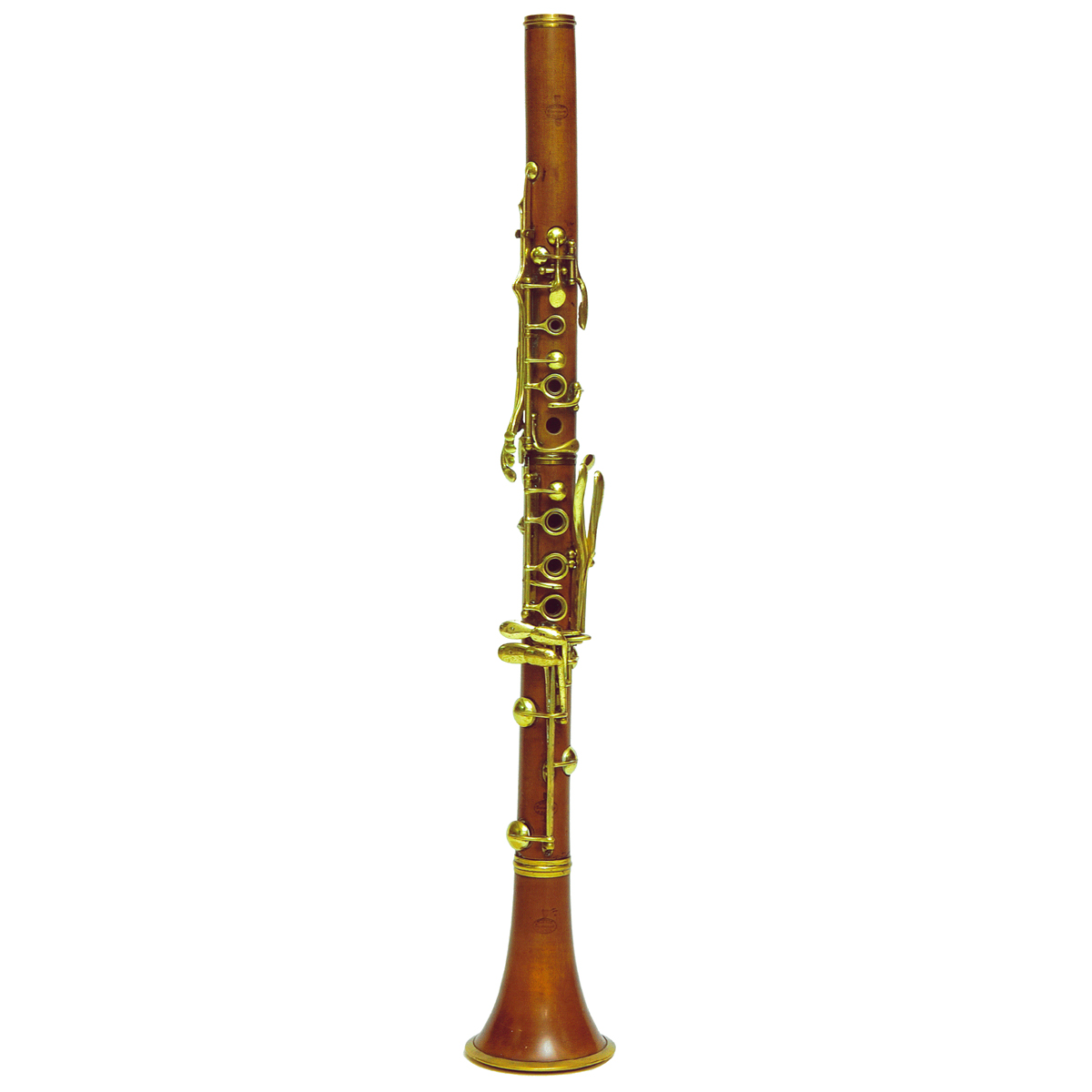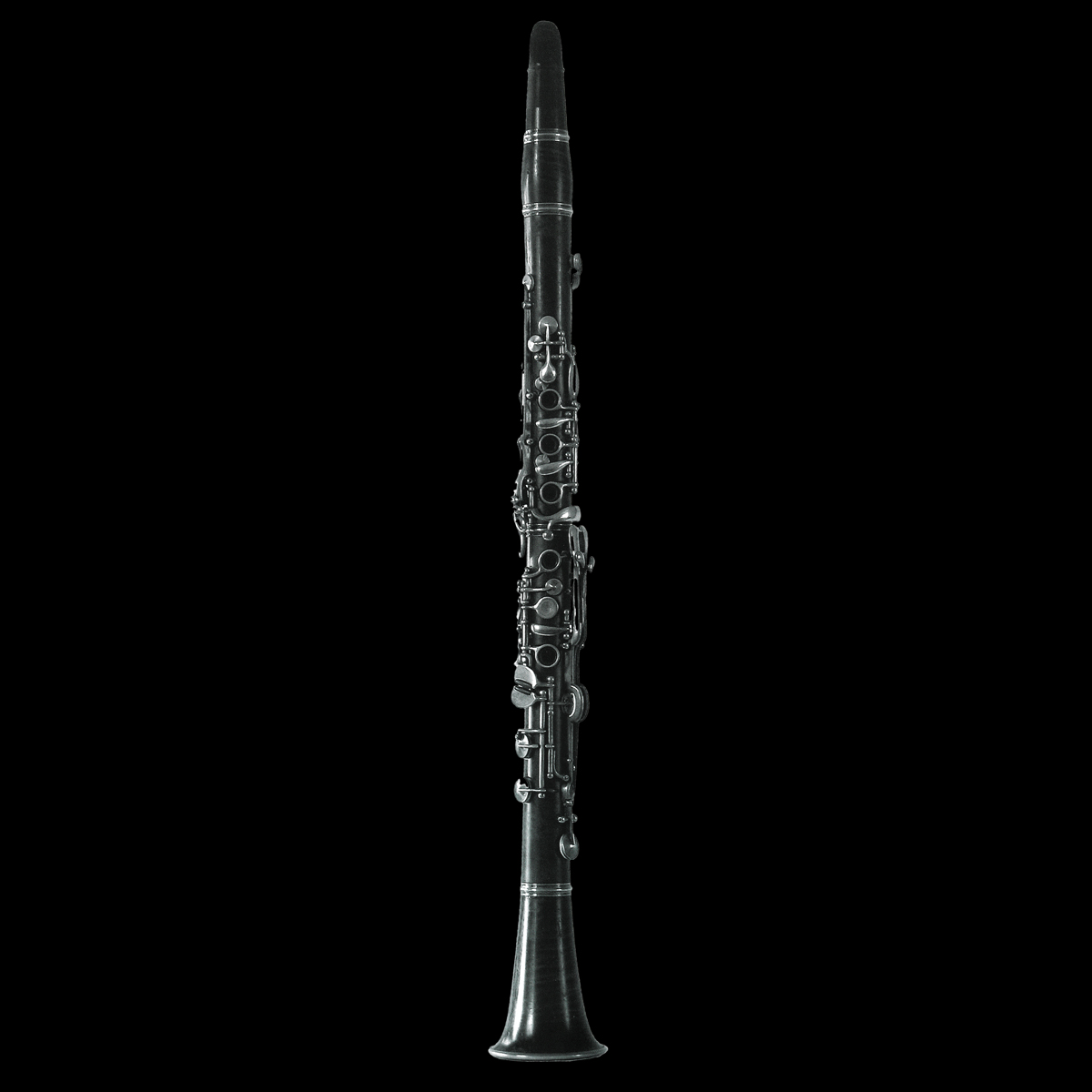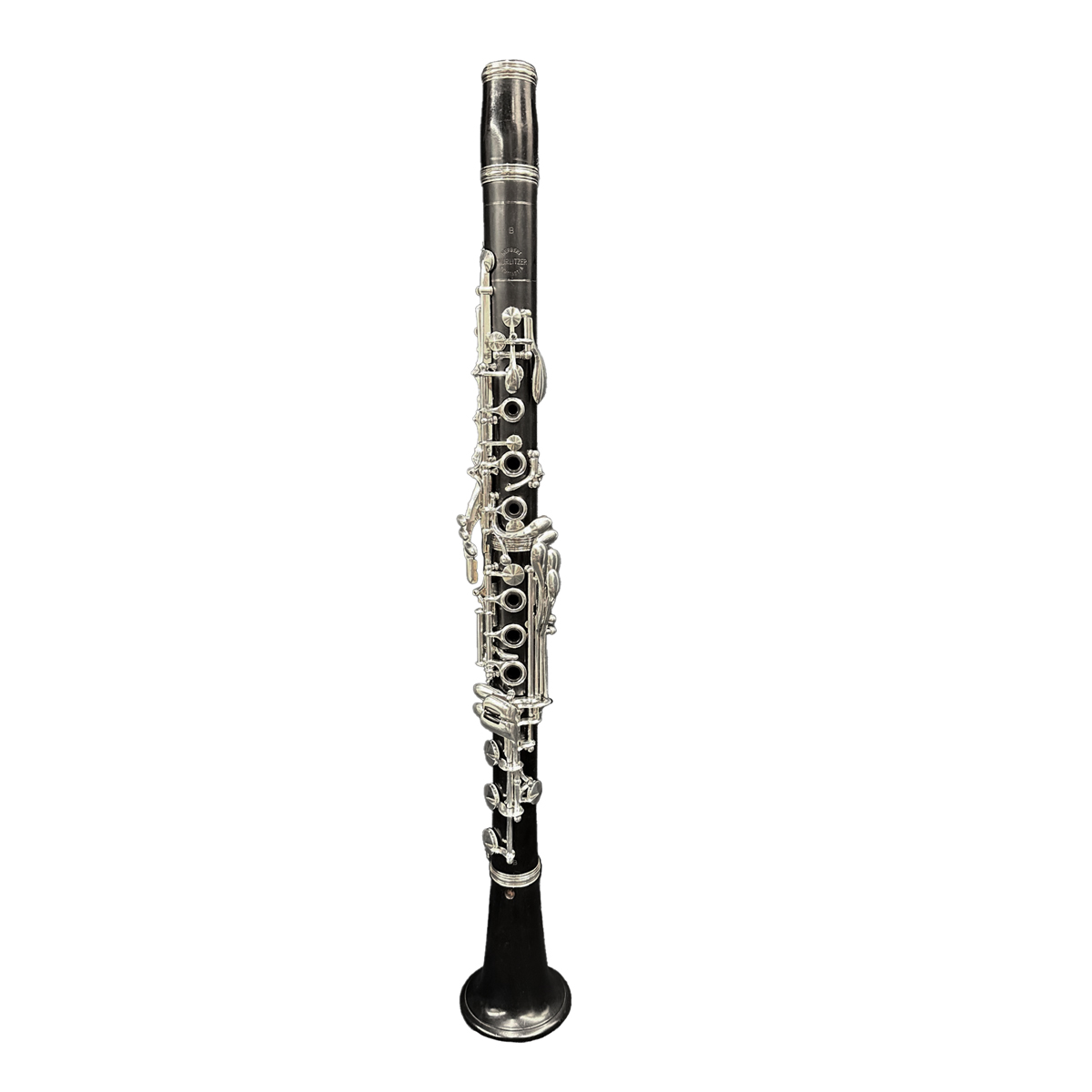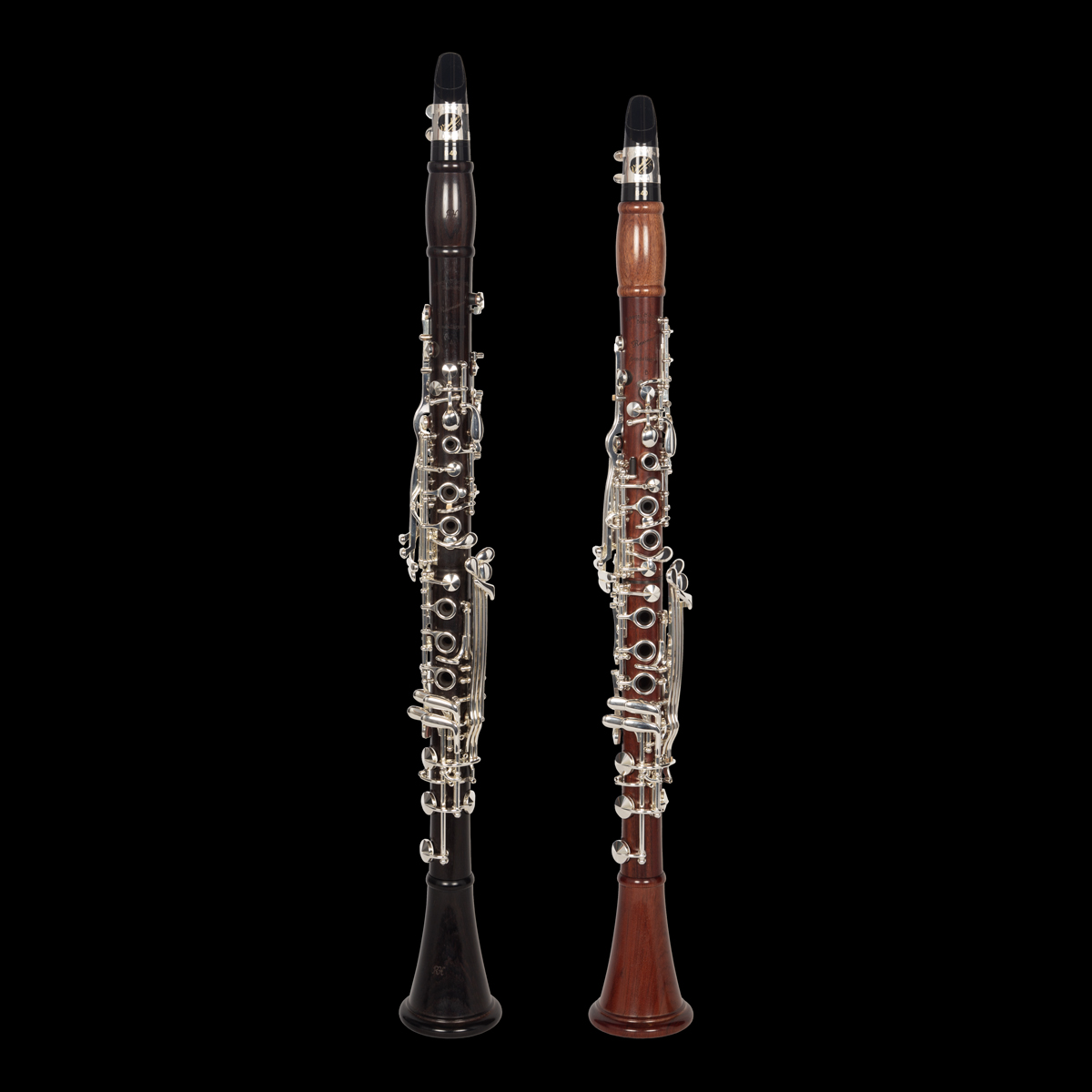2. The 18th century
After its creation, the clarinet, in its initial form with only 2 keys, remained limited to its natural diatonic scale. Chromatic semitones, limited to a few, were obtained as on the recorder by using forked fingerings. Also, the B of the clarion register was missing to link the chalumeau’s range to the upper one, called the clarion register. A few decades later, the lower body was lengthened by a semitone to the lower E, enabling the missing B of the clarion register to be emitted. A third key was created, articulated by the left little finger.
To adapt to the repertoire and take advantage of their different features, clarinets were soon produced in different keys. Because the pitch also varied from one area to the other, it was necessary to have bodies of different lengths, hence the solution of building the instrument in several detachable sections.
By the second half of the 18th century, the clarinet became popular in Europe, with a growing number of craftsmen producing them. Teaching has developed, as composers and good soloists gradually popularized this new instrument. But the instrument remained difficult to master and limited in its development, with chromaticism remaining very poor. The reed remained placed above the mouthpiece, but already the method of V. Roeser (1764) and Heinrich Bärmann (circa 1810) recommended turning the mouthpiece upside down, with the reed tied below.
The development of the clarinet often continues through the collaboration of a soloist and a good craftsman, usually on an empirical basis. Thus, the 5-key instrument common at the time of Mozart (late 18th century) was augmented by a 6th key (C#-G#) in 1791 (Lefèvre method, Paris). Other models incorporating new keys soon followed. Each additional key facilitated emission, intonation and playing technique. In 1827, Simiot (Lyon) produced instruments with up to 20 keys!
4. The “Boehm” system
In 1838, Louis Auguste Buffet (1789-1864), a wind instrument maker (uncle of Jean-Louis Buffet, founder of today’s eponymous brand), was approached by Hyacinthe Klosé (1808-1880), the new professor of the clarinet class at the Paris Conservatoire, and successor to Frédéric Beer since 1838. A collaboration between Messrs. Buffet and Klosé resulted in a completely redesigned clarinet, not based on previous systems and fingerings used until then. The patent N°16036, filed in December 1843 and accepted on February 19, 1844, is entitled “clarinette à anneaux mobiles” (clarinet with movable rings). Thus, a tutoring method by H. Klosé was immediately published. This clarinet was subsequently associated with the Boehm patronymic, due to the similarity of the 3-ring right-hand key. The Boehm’s surname became very popular in France thanks to his magnificent work on the flute. The “Boehm system” was then associated with the Buffet/Klosé clarinet.
This new clarinet, of radically new construction, featured several highly innovative creations. In its basic form, this new concept sported 6 ring keys and 17 standard keys, some of which were doubled. It represented a significant upgrade in terms of emission, intonation and ergonomics. This system was widely adopted in France and progressively internationally in the first quarter of the 20th century, except in Germany and German-speaking countries. Forked fingerings had disappeared (except for one) and sound homogeneity was greatly improved. This new, partially doubled keywork enabled great virtuosity, and the excellence of the French school through its great soloists was to contribute significantly to the “Boehm system” worldwide success.
6. Ernst Schmidt's creations
Ernst Schmidt (1871-1954) was a clarinettist from the Mannheim area. Being a perfectionist, he improved instruments from both the German and then French schools. In collaboration with the clarinet maker Louis Kolbe, he developed the Schmidt-Kolbe concept in 1905. Based on the German school (Müller-Bärmann), he combined extra holes with additional resonance keys to balance timbre, emission and intonation.
Ernst Schmidt designed the “Boehm Reform” later system based on the clarinet created by Buffet-Klosé. This concept is a combination of a German bore, mouthpiece and reed compatible with Boehm fingerings. It incorporates four new resonance holes to merge timbre, emission and intonation. In 1912, he also patented his “clear Bb” system (an ingenious principle of a subtle combination of the twelfth hole and B-flat throat). He also incorporated rollers on the right-hand little finger keys.
The “Boehm Reform” system was taken up and perfected by his successor Fritz Wurlizer (1888-1984), then by his son Herbert. The principle was also successfully applied to the bass clarinet.
The Schmidt-Kolbe project did not unfortunately meet a lasting success, but the “Boehm Reform” system is still in use today. However, the necessity to use German mouthpieces and reeds severely limits its acceptance outside German-influenced countries.
Ernst Schmidt is credited with the convincing application of resonance holes and a simple system for improving the B-flat throat. Today, the system is offered by several top craftsmen, including Seggelke in Bamberg.

